Olalla Sáiz Vázquez, occupational therapist and professor at the University of Burgos, presents together with her students Vanessa Sánchez García and Alejandro Ubierna Castelar, a cognitive workshop with NeuronUP for the cognitive rehabilitation of pediatric stroke.
Clinical case
Juan is an 8-year-old boy who suffered an ischemic stroke in the right parietal region 4 months ago. The stroke he suffered is an interruption of blood flow to part of the brain due to the blockage of an artery by a clot.
Being an 8-year-old, this can cause neurological sequelae such as:
- difficulty moving,
- speech problems,
- memory and learning impairments,
- as well as changes in behavior or coordination.
The severity of the consequences depends on how quickly treatment is received and on the affected brain area.
In Juan’s case, what has occurred are alterations in his sustained and selective attention, making it difficult for him to concentrate on school tasks and filter distracting stimuli. In addition, he presents visuospatial and visuoconstructive problems, evidenced by his inability to assemble puzzles, build with blocks, or reproduce geometric figures. However, his expressive and receptive language skills remain intact, as does his ability to read and understand basic texts appropriate to his level.
The proposed intervention includes pediatric cognitive rehabilitation with tools such as NeuronUP, focused on improving attention and visuospatial skills through adapted playful activities focused on brain injury in young people. Collaboration with his school will also be carried out to adapt tasks and occupational therapy will be implemented to reinforce hand-eye coordination and visuoconstructive skills. With this comprehensive approach and family support, Juan is expected to progressively recover his functional abilities, improving his school performance and quality of life.

Subscribe
to our
Newsletter
Pediatric stroke intervention from occupational therapy
Goals of the pediatric stroke intervention
General goal of the pediatric stroke intervention
The general goal intended to be achieved with the planning and application of this program is to improve Juan’s attention capacity and visuospatial and visuoconstructive skills, promoting his concentration on structured tasks and his ability to interpret and manipulate visual stimuli effectively, reducing the influence of external distractions and improving his performance in practical and academic activities.
Specific goals of the pediatric stroke intervention
To achieve this general goal, a series of specific objectives are proposed:
- Improve sustained and selective attention by reducing distraction from irrelevant stimuli.
- Strengthen visuospatial and visuoconstructive skills through exercises with blocks or puzzles.
Approach to the pediatric stroke intervention
Based on the identified needs and proposed objectives, it has been decided to develop a personalized cognitive stimulation program, based on the NeuronUP platform, specifically with its license NeuronUP Kids.
This tool has been considered appropriate to address the case, as it offers structured, dynamic and motivating activities that can be personalized and graded to meet the user’s needs, isolating the cognitive functions intended to be stimulated and, therefore, focusing the intervention on the proposed objectives.
The proposed program will consist of a series of sessions, lasting 30 minutes each, with a frequency of 3 weekly sessions, for a period of 2 months.
Given the user’s difficulties with sustained attention, short-duration sessions (30 min/session) are proposed with frequent alternation between activities. 3-4 activities per session will be performed with the aim of capturing and maintaining his attention and making the activity more motivating, trying to prevent him from becoming frustrated or overwhelmed by a single activity.
The activities in question are:
- Animals Restaurant
- Complete the Jigsaw Puzzle
- Pop the Balloons
- Program Your Robot
1. Animals Restaurant
In this activity an animal appears that asks for a specific food. At the bottom of the screen there is a table where foods appear and are progressively replaced by different ones; the user’s task is to click when the food the animal needs appears.
This activity has been selected because it optimally stimulates attentional capacity, trains selective attention to choose the specific food requested by the animal, requiring the user to ignore the other foods that act as distractors, and also requires sustained attention for a period of time since the foods appear and disappear.
It will start from phase 3, in which a single animal appears requesting food, so that the user will only have to select one type of stimulus.
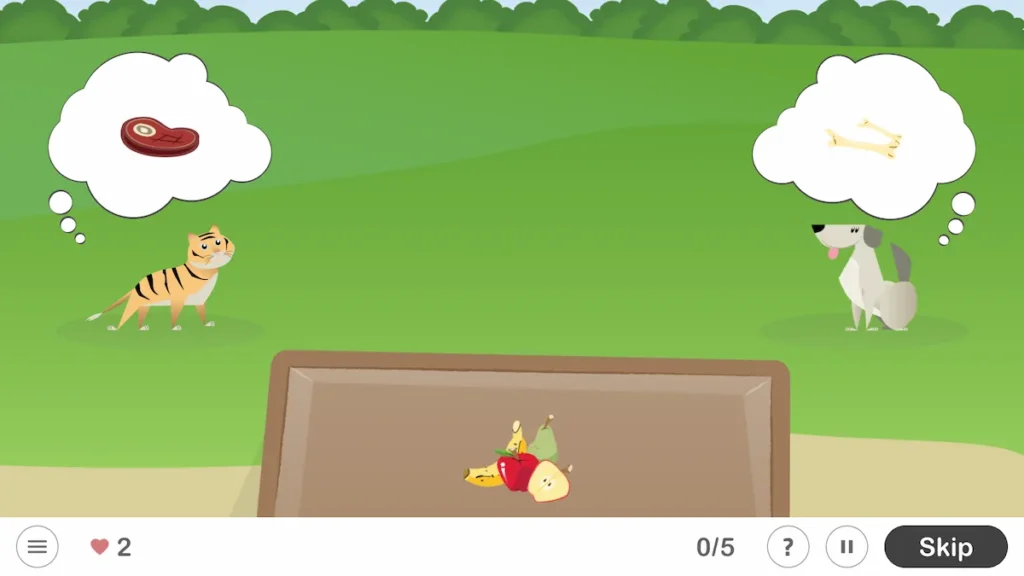
One of NeuronUP’s positive points is the possibility of progressive self-grading of activities. As the user completes levels, difficulty increases or decreases.
In this activity, when moving up a phase the number of animals requesting food increases. The animals begin to request different types of food, so the activity increases in difficulty while adding a new component of alternating attention.
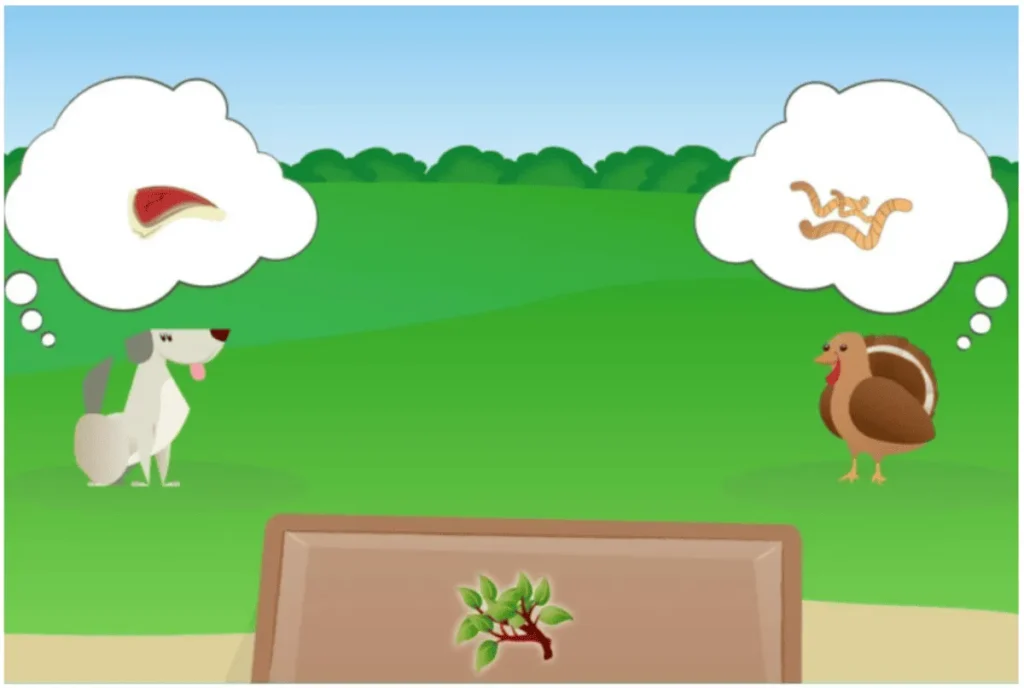
2. Complete the Jigsaw Puzzle
In this activity jigsaw puzzle pieces appear disordered and overlapping each other. The user’s task is to arrange them so that the final image can be seen. The model image appears in the lower-left corner, although it can be hidden so that the user does not have an example to follow.
This activity has been selected because it is suitable for stimulating visuo-perceptive and visuoconstructive skills, in addition to spatial relationships.
The activity will start from phase 3, since a small number of pieces appear and they are large enough for him to fit them together.
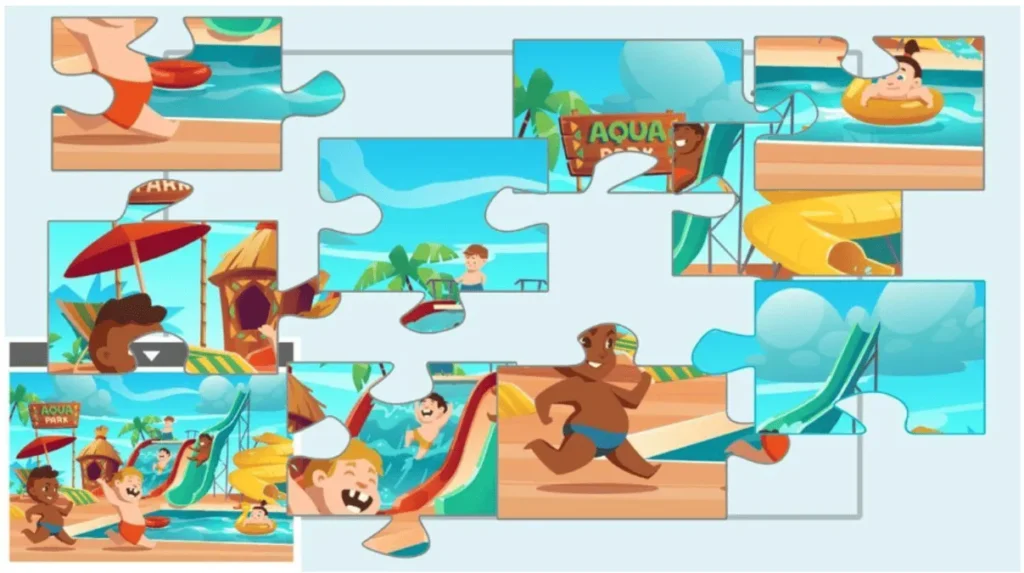
As the user successfully completes several levels, they move up a phase and the difficulty increases. For example, the pieces become smaller, their number increases and they must be rotated to fit together.
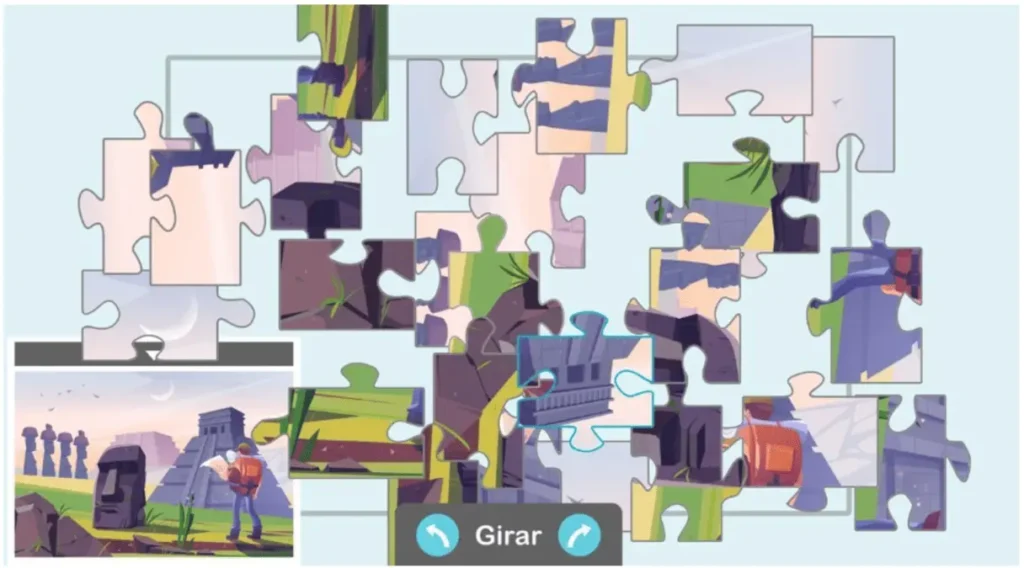
3. Pop the Balloons
In this activity balloons of different colors and shapes appear on the screen. The user’s task is to click on the balloons that are identical to the given model to pop them.
This activity has been selected because it is suitable for stimulating selective attention, popping only the balloons that meet the given characteristics and inhibiting the other balloons that act as distractors. Additionally, since balloons constantly appear, the activity is optimal for training sustained attention.
The activity will start from phase 5, a phase in which balloons differ in color and shape, at a moderate speed.
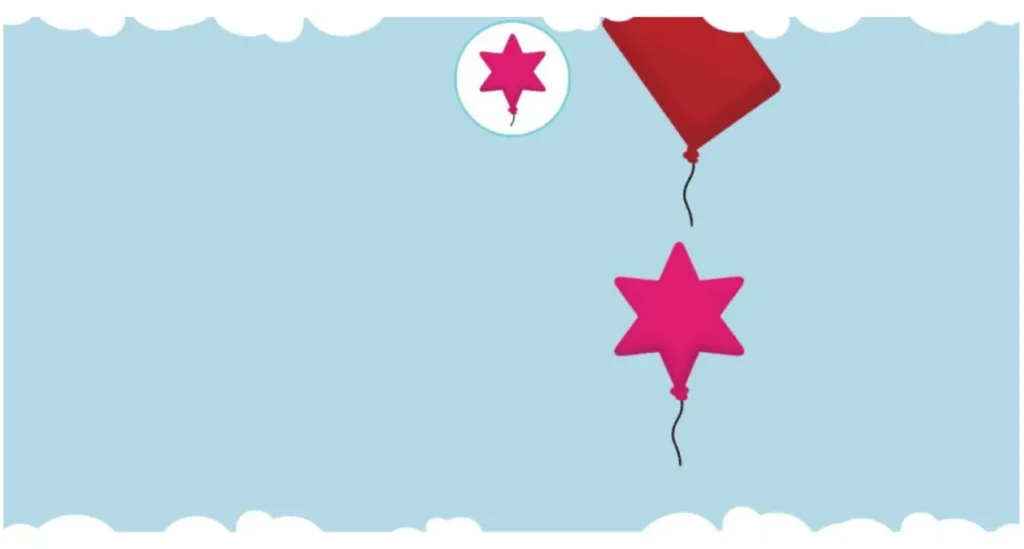
When the user successfully completes several levels they move up a phase and the difficulty increases. For example, the balloons become the same color and have similar shapes, making it more difficult to discriminate those that have the same shape as the given model while ignoring distractors; additionally, the speed and number of balloons on the screen increase.
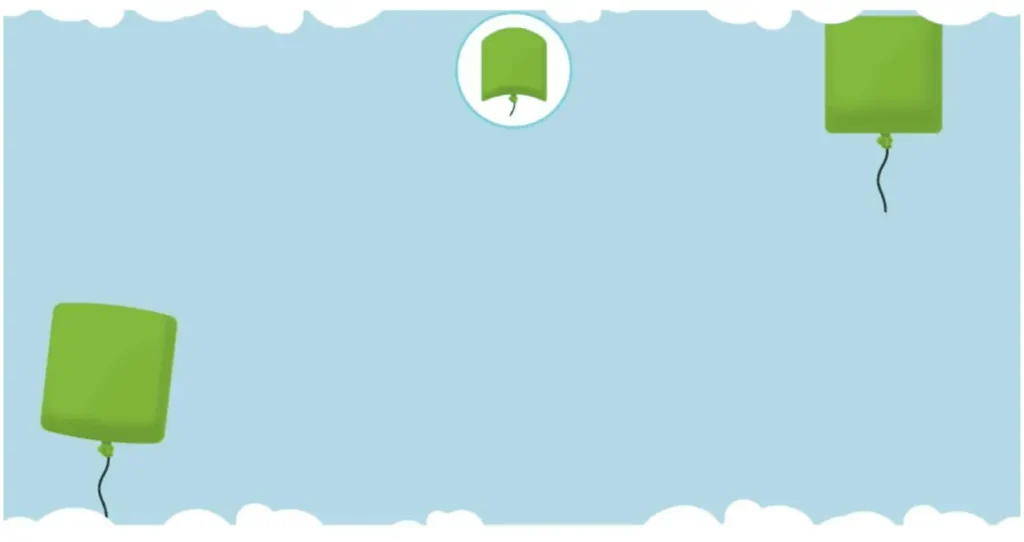
4. Program Your Robot
In this activity there is a robot with several lights. The user’s task is to copy the position of the lights that are on by looking at a model, taking into account that the model is mirrored.
This activity has been selected because it is optimal for working on visuoconstructive praxes and the user’s spatial relationships. In addition, it requires maintaining sustained attention and also works selective attention.
The activity will start from phase 2 so that the child understands how the activity works; in this phase the light board is 2 x 3, and the lights are only one color.
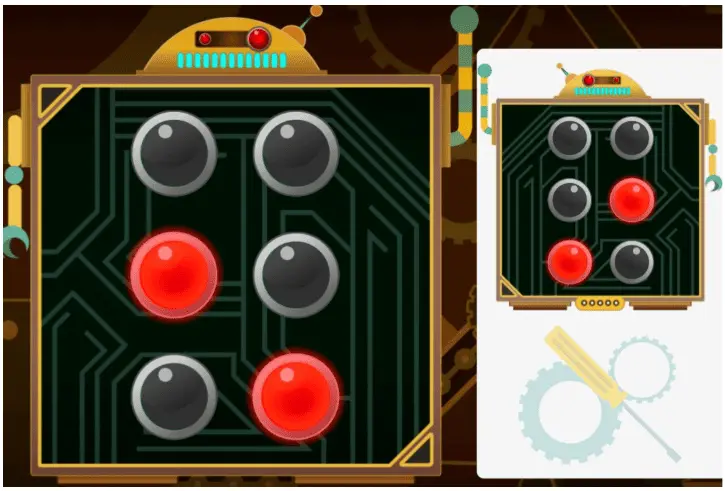
As the user successfully completes levels, they will move on to the next phases, increasing difficulty: the board will have a greater number of lights and lights of different colors will be included, achieving progressive grading.
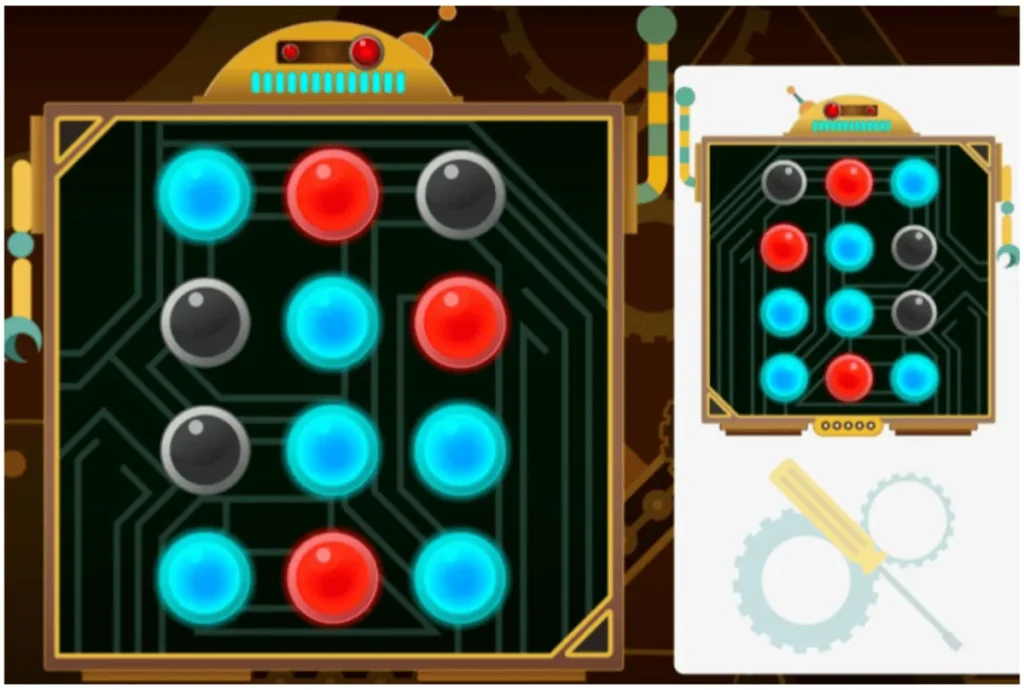
Conclusion
In conclusion, NeuronUP has proven to be an effective and versatile tool for developing a personalized cognitive stimulation program for this clinical case of a child with brain injury due to stroke. The platform allows activities to be customized according to the user’s characteristics, working on areas of difficulty.
In addition, its dynamic and attractive format encourages users’ motivation and engagement, making it an excellent option for both stimulation and cognitive rehabilitation. Therefore, tools like NeuronUP could be effectively integrated into interventions aimed at populations with uncommon conditions, achieving significant advances in their development and quality of life.
If you liked this blog post about a cognitive workshop with NeuronUP for pediatric stroke intervention, you will likely be interested in these NeuronUP articles:
“This article has been translated. Link to the original article in Spanish:”
Taller cognitivo con NeuronUP para la intervención de ictus infantil
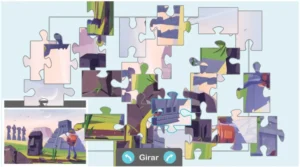




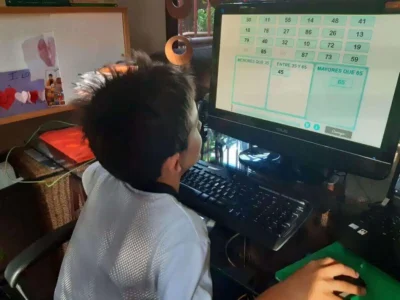
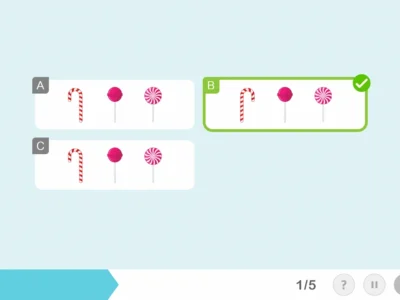
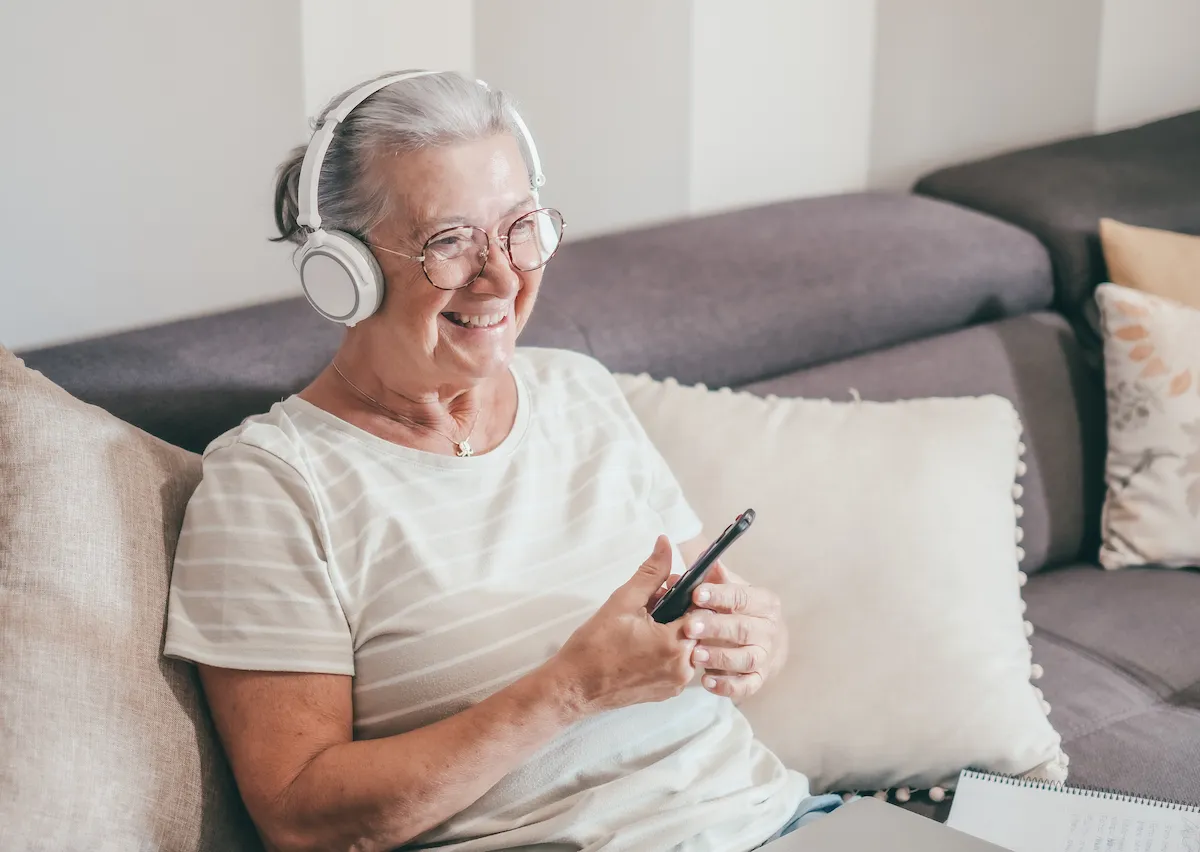 Music therapy in the treatment of dementia: Benefits, types, and its impact on the brain
Music therapy in the treatment of dementia: Benefits, types, and its impact on the brain
Leave a Reply